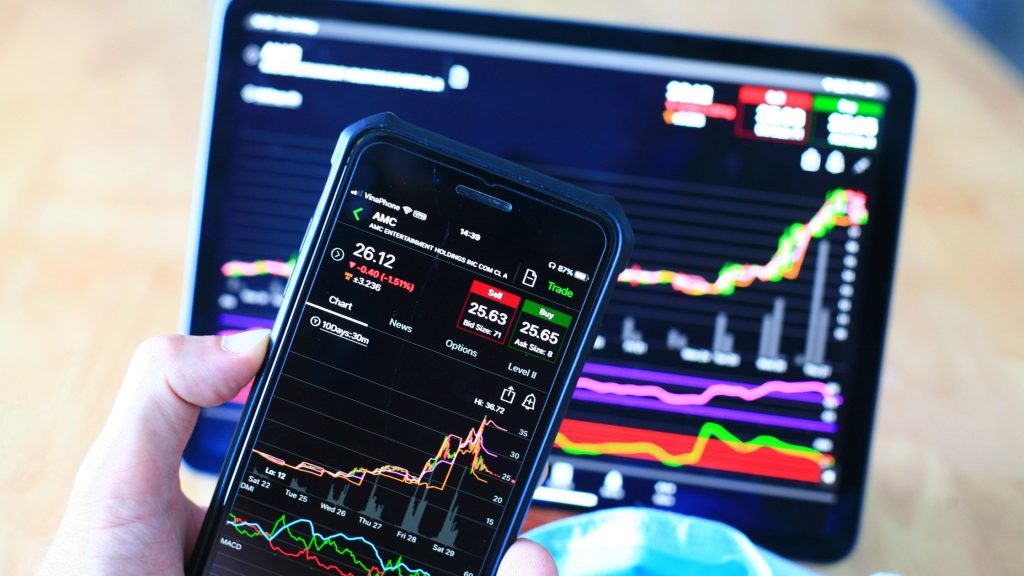In forex trading, margin is the amount of money that a trader must deposit in order to open a position. It is essentially a good faith deposit that the trader uses to hold a position in the market. The margin requirement is set by the broker and is typically a small percentage of the total value of the trade.
For example, if a broker has a margin requirement of 1%, and a trader wants to open a position worth $100,000, they would have to deposit $1,000 as margin. The trader can then use this $1,000 to hold a position in the market, with the remaining $99,000 being provided by the broker as leverage.
The leverage that the trader gets from the broker allows them to control a much larger position in the market than they would be able to with the amount of money they have deposited as margin. This means that they can potentially make larger profits, but it also means that they can potentially suffer larger losses.
It’s important to note that while margin can increase the potential for profit, it also increases the potential for loss, so it is important to use appropriate risk management strategies, such as stop-loss orders, when trading on margin. Additionally, margin trading is a high-risk activity and it is highly recommended to consult a professional financial advisor or portfolio manager before attempting to use margin trading, and also to be aware of the leverage and the rules of the broker that you are using. Trust me, you do not want a margin call from your broker. Ever.
How Leverage Affects Your Forex Trading
Here is an example of how leverage can affect a forex trade:
Let’s say a trader has a $10,000 trading account and wants to open a position in the EUR/USD currency pair. The trader decides to use leverage of 100:1, which means that for every $1 in their account, they can control $100 in the market.
The trader opens a position to buy 1 standard lot (100,000 units) of EUR/USD at a price of 1.20. The total value of the trade is $120,000 (100,000 x 1.20). The trader only has to put up a margin of $1,200 (1% of the total value of the trade) to open the position.
If the price of EUR/USD increases to 1.25, the trader can close the position and make a profit of $5,000 (100,000 x 0.05). The trader’s return on the trade is 42% ($5,000/$12,000).
However, if the price of EUR/USD falls to 1.15, the trader can close the position and suffer a loss of $5,000. The trader’s return on the trade is -42% (-$5,000/$12,000).
Leverage is a double-edged sword and it is not appropriate for all traders, and it is important to use appropriate risk management strategies for a leverage trade and to be aware of the rules and regulations of the broker you are using. Additionally, it’s worth noting that no strategy can guarantee a profit or completely eliminate risk.

Risks and Rewards of Leverage in Forex Trading
Leverage in forex trading can provide both risks and rewards for traders.
Rewards:
- Leverage allows traders to control a large amount of currency with a relatively small amount of capital. This means that traders can potentially make larger profits than they would be able to without leverage.
- Leverage also allows traders to enter the market with a smaller amount of money, which can be beneficial for traders who do not have a lot of capital to invest.
Risks:
- Leverage also increases the potential for losses. If a trade goes against a trader, the leverage can amplify the loss, potentially resulting in a margin call or even a complete loss of the trader’s account.
- Leverage can also lead to emotional and impulsive trading decisions. When traders are able to control large sums of money with a small amount of capital, they may be more likely to take on excessive risk.
- Traders may also have to pay interest on the borrowed money, which can add to the cost of trading.
- Leverage can also amplify the effects of volatility, making it harder to predict the outcome of trades.

How to manage Margin and Leverage in Your Forex Trading
There are several ways to manage margin in forex trading, but some of the best practices include:
- Using stop-loss orders: A stop-loss order is an order placed with a broker to close a trade at a specific price level in order to limit potential losses. This is an effective way to manage margin because it can help to prevent losses from exceeding the amount of margin that a trader has deposited.
- Keeping an eye on margin level: A margin level is the ratio of equity to margin, and it is used to determine whether a trader has enough funds to open new positions or maintain existing ones. It’s important to keep an eye on the margin level and make sure that it remains above the minimum level required by the broker.
- Using proper position sizing: Position sizing is the process of determining the appropriate size of a trade in relation to the size of the trading account. Traders should use proper position sizing to ensure that they are not risking too much of their margin on any single trade.
- Diversifying the portfolio: Diversifying the portfolio can help to spread risk across multiple positions and asset classes, which can help to reduce the overall risk of the portfolio.
- Monitoring the market: Keeping an eye on the overall market conditions and making adjustments as needed can help to avoid potential losses caused by market volatility.
- Using a Risk management plan: It’s important to have a plan in place that outlines how much risk you’re willing to take on, and how you will manage that risk.
What is the best way to manage leverage in forex trading?
Managing leverage in forex trading is an important aspect of risk management. Here are some best practices to manage leverage:
- Use appropriate leverage: The amount of leverage used should be appropriate for the individual trader’s experience and risk tolerance. It’s important to use only as much leverage as you are comfortable with, and not to over-leverage your account. And as with margin monitoring:
- Keep an eye on your margin level
- Use stop-loss orders
- Use proper position sizing
- Monitor the market
- Have a Risk management plan
It is always important to use appropriate risk management strategies.




